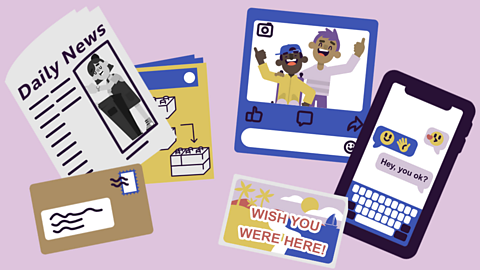Did you know?
The first examples of travel writing came from Ancient Greece, with writers such as Pausanias who started describing his many journeys around AD 150. Later, during the Middle Ages, travel writing became popular in Arabic and Chinese civilisations as well as in Europe.
Introduction to travel articles
Key learning points:
- What is travel writing?
- What itās used for and who it is written for.
- How to write a successful travel article using the techniques and conventions of effective travel writers.
What is a travel article?
Travel writing can be defined as writing that describes places, peoples and cultures.
Types of travel writing literature include:
- Adventure travel ā travel that includes descriptions of memorable experiences, daring expeditions, long arduous journeys, and other adventurous or exciting events.
- Travel guides ā factual information on places, people, culture, customs, languages and history, with recommendations and guidance provided to inspire and inform other travellers.
- Travelogues ā personal experiences of travelling, with descriptions of places, customs and people. Travelogues are often written by authors during their travels.
- Promotional travel writing ā marketing and advertising of places, resorts, activities, events and services, intended to sell holidays or inspire travel to particular locations.
Travel articles can be found in many daily newspapers and popular magazines, in specialist travel publications, or online in blogs and on websites.
Purpose and audience
A travel articleās purpose is primarily to provide information to readers. This can come in the form of researched facts or a description of the writerās own experiences.
Travel articles are often designed to entertain and so use anecdotes, vivid descriptions and interesting, unusual or impressive facts.
Travel writers think carefully about their target audience.
- A travel review written for readers of a pensioner's magazine would consider their interests and capabilities, perhaps focussing more on visits to art galleries and other cultural attractions, rather than family theme parks.
- A travel website aimed at families with young children would contain information detailing if there was childcare available at a resort, if there were activities suitable for children, or if the nearby beach was safe for swimming.
Conventions of travel writing
Travel writing can inspire others to explore, to experience new things and appreciate different cultures. Travel writing has its own conventions :
- often written in the first-person, using āŅµā
- tells the story in the past tense
- relatable and conversational in tone
- contains sensory details (tastes, smells, sounds, sights)
- provides useful tips, facts or insights
Here is the opening to a travel article about Victoria Falls, located on the border between Zambia and Zimbabwe. The article is designed to both inform and entertain.
As I walked along the summit of Victoria Falls, through an unexpected lush rainforest, towards the deafening ferocious downpour of the Zambezi River, anticipation coursed through me. Clothes, shoes, hair, skin, every stick, stone, plant, animal, the air itself was soaking wet. At the mouth of the gargantuan 108 metre (354 ft) drop, was an awe-inspiring view of water clouds and a gorge.
In the above extract several travel writing conventions are used:
- Sensory imagery ā ādeafeningā sound, feeling āsoaking wetā.
- The description of the writerās emotions ā āanticipation coursedā and āan awe-inspiring viewā.
- Dramatic language ā āgargantuanā (meaning massive).
- Facts ā ā108m (354 ft) dropā.
Structural conventions
This is how to structure a travel article:
- Start with a headline, for example:
Victoria Falls: a majestic sight.
- Follow with a standfirst ā a sentence that summarises what the article will be about, for example:
A natural wonder of the world for both adrenaline junkies and those who prefer more relaxed activities.
Use the opening paragraph to hook the reader. Many travel articles start in the middle of the action ā for example, here you could be in the middle of bungee-jumping from Victoria Falls bridge. Then use the next paragraph to explain how you got there.
Use the following paragraphs to build more description. They should include both the adventurous activities and relaxing ones to match the standfirst you used at the beginning. It is important to signpost what you are writing so the reader can keep track of what is happening. For example:
The next day I decided to head for calmer conditions, in contrast, my daring family headed for the helicopter.
- In the final paragraph, end with a reflection or summary of your experience.
Test your knowledge
Play Bitesize secondary games. gamePlay Bitesize secondary games
Have fun playing science, maths, history, geography and language games.

More on Non-fiction writing
Find out more by working through a topic
- count5 of 10

- count6 of 10

- count7 of 10

- count8 of 10
